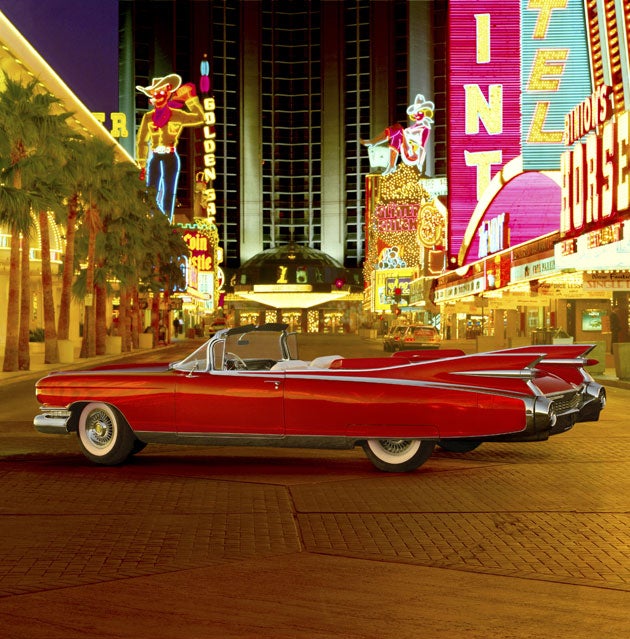Cars, By Stephen Bayley
Dream machines of an auto-erotic age

Stephen Bayley's Cars borrows its subtitle from a line in Tom Wolfe's 1964 book, The Kandy-Kolored Tangerine-Flake Streamline Baby: "Cars mean more to these kids than architecture did in Europe's great formal century, say, 1750 to 1850. They are freedom, style, sex, power, motion, colour."
Wolfe has described Bayley as the second most intelligent man in Britain, no doubt because Wolfe himself was here at the time. Cars, however, is not just a demonstration of conceptual and factual acuity; it is an engrossing braid of cross-cultural vignettes, as obsessively polished as the flowing coachwork of a 1941 Talbot-Lago T150SS.
When it is hard to point out significant formal differences between a mid-range BMW, Toyota or a dastardly sub-primeist's Bentley, this lusciously produced book reminds us of a time when automotive design had less to do with the techno-optimisations that have made the shape of car bodies as generic as their performances. We are far from the puerility of Top Gear's Sultan of Synchromesh, Jeremy Clarkson. Instead, the exquisitely lubricious half-tones of Tif Hunter's portrait of a 1959 Cadillac Eldorado Biarritz seems to trigger the rising bass-line from Donald Fagen's Nightfly album, and the line: "She's got the right dynamic for the new frontier."
Bayley's commentaries on 86 cars are models of vividly compressed research, but his preface is crucial in setting the scene. It embeds us in a world of breezily academic cross-reference, seamed with solid-gold quotes. "I want that [car's] line to have a duflunky, to come across, have a little hook in it, and then do a rashoom or zong," declared Harley Earl, the most famous car designer in mid-century America. In Cannery Row, John Steinbeck wrote that "two generations of Americans know more about the Ford coil than the clitoris". Bayley certainly mines the sexual connotations of cars, but more interesting is the idea of personal movement as part of our Triplex-screened moviolas, in which fact and possibility have fugitive, fictional qualities.
Where does car design stop, and art begin? The photography heightens this oscillation: almost all the portraits have a KY Jelly sheen that might simultaneously invoke Jeff Koons's glass sculpture, "Position Three (Kama Sutra)", with what Bayley describes as "the miscegenated bloodlines and complex lineaments that comprised the mid-century motor industry".
Those bloodlines and lineaments strike home, even to a reviewer whose interest in cars died as he stood at Goodwood in 1962, watching Stirling Moss pass through its double-apex again and again with an unearthly insouciance. Moss, one of a handful of true Grand Prix greats, crashed on the track that day, and never raced again.
In Cars, one re-encounters this sense of experiment, sublimity and the existential strangeness of cars. The book's gems transcend obvious iconography, or what Lewis Mumford described as the car industry's "secret collaboration between the beautician and the mortician". How can the 1948 Cadillac 61, or a 1951 Lancia Aurelia B20 GT, or a 1954 Mercedes-Benz 300SL or a 1998 Smart car be anything other than cultural marvels? Their ramifying beauty is magnified by their perfect stillness; a stillness accentuated by a narrative hyper-mobility that can connect, in a trice, Ike Turner's 1951 hit, "Rocket 88", with Sam Philip's early funding of Elvis Presley, and the 1949 Mercury that featured in Rebel Without A Cause.
Mind you, who else but Bayley would then dare to suggest that the 2003 BMW 5 was a neo-baroque "disruption" comparable to Cubism? The damn thing looks like a cross between a Mondeo and a Volvo S80. Oh dear, I've just Clarkson'd, haven't I?
Subscribe to Independent Premium to bookmark this article
Want to bookmark your favourite articles and stories to read or reference later? Start your Independent Premium subscription today.

Join our commenting forum
Join thought-provoking conversations, follow other Independent readers and see their replies